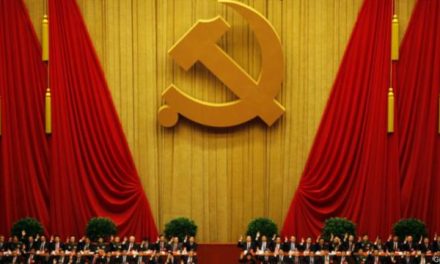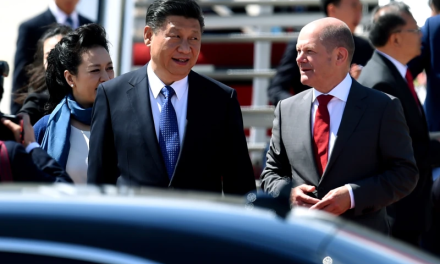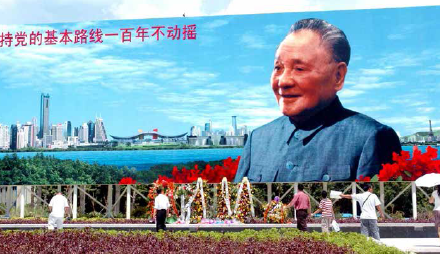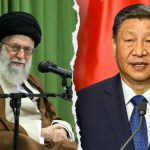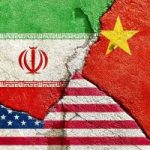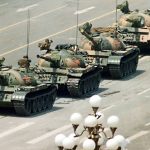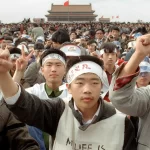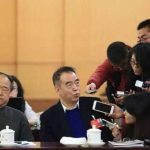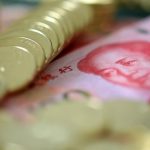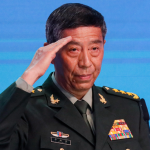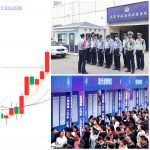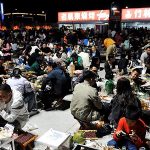BY BRADLEY A. THAYER AND LIANCHAO HAN
When China’s paramount leader Deng Xiaoping ordered the slaughter of the pro-democracy protesters in the Tiananmen Square massacre of June 1989, Xi Jinping was the party chief of Ningde district in Fujian province, over a thousand miles from Beijing.
As we commemorate the 30th anniversary of the massacre, it is important not only to remember the terrible tragedy but to contemplate how Xi would react to a similar situation today.
In the late spring of 1989, millions of people took to the streets in Beijing and other major cities in China to demand political reforms and a clean government. It was perhaps the largest peaceful protest in China since the Chinese Communist Party (CCP) came to power in 1949, and perhaps even the largest in the history of modern China.
What was unique about the pro-democracy movement that gathered in Tiananmen Square was that protesters came from within and outside the Chinese Communist system. They sought to make China a modern country with democracy and the rule of law as defining political principles of the country. Famously, they constructed a 30-foot plaster-covered “Goddess of Democracy” statue in the center of Tiananmen Square, which recalled the Statue of Liberty. Symbolizing the desire for democracy and freedom was the common dream of the Chinese people.
The historic movement was sparked by the death of Hu Yaobang (the CCP general secretary from 1982-1987), which sparked the seven-week protest and that soon captured the world’s attention. At first, protesters occupied the square in support of Hu. Seen as a reformer, Hu was popular among many Chinese citizens, but equally unpopular among the CCP hardliners. The gathering in memory of Hu turned into a popular movement for democracy.
But the hardliners led by Deng Xiaoping refused the moderate demands, and instead ordered over 200,000 soldiers from the People’s Liberation Army (PLA) to march into Beijing, and retake Tiananmen Square from the student protesters on June 4, 1989. The PLA attack resulted in thousands of deaths of the innocent. The exact casualties are still unknown because of the CCP’s cover-up and censorship of information concerning the event.
In the Soviet Bloc, the 1989 pro-democracy movement, at first in Poland, triggered a chain reaction that ultimately led to the collapse of the Soviet Union and the communist governments of its satellites. In contrast, the June 4th massacre is a tragedy of modern China, which took the country in an unfortunate direction. The real cost of the massacre was that China lost the opportunity to become what China has been and, indeed, should be again: a great and sublime power.
Interestingly, after the bloodshed, Xi Jinping’s wife Peng Liyuan, a PLA pop singer, hosted concerts in which she sang for soldiers to celebrate their victory crushing the “counter-revolutionary riot.” However, Xi’s father, Xi Zhongxun, a CCP veteran leader, stood firm against Deng’s order to kill student protesters. The senior Xi openly criticized Deng Xiaoping for using force to slaughter the students. As a consequence, he was punished by being ejected from the CCP leadership and exiled to the south for nearly 10 years. Xi’s divided family history reflects today’s China. Those who survived the massacre were silenced, imprisoned or exiled. The CCP hardliners and their supporters dominated China’s politics.
Deng drew seminal lessons from the collapse of communism in the USSR and its Eastern Bloc allies. Accordingly, Deng recognized that the CCP’s economic performance would provide legitimacy. This solution worked well for decades. But the heady economic growth is waning, and consequently the party’s legitimacy also is vulnerable to challenge.
Xi drew a different lesson from the former Soviet Union’s collapse. He believes Soviet party leaders’ communist ideals and convictions wavered, and they lost control of its ideology. His determined solution is what may be termed “communist fundamentalism”: the return to traditional Leninism and Maoism, in order to ensure the party’s control of the commanding heights of ideology. This requires tightly controlling the internet to police thought and expression and preserve the party’s control. It dictates absolute loyalty from the military to ensure regime security. The subsequent measures he implemented, including high-tech mass surveillance, turned China into a super police-state, with little room for any dissent.
Despite the formidable power of this dictatorship, there is some hope, because of the undercurrents of resistance. The tension has intensified between the Xi Jinping clique — including his old-school leftist and nationalist supporters who hail him as a hero — and those who oppose this tyrannical clique by advocating for political and civil rights and internet freedom, and include some within the CCP who embrace and defend Deng’s reforms and policies.
Xi’s mistakes and gross human rights abuses, such as suppressing millions of Uighurs, ensure that a random event may trigger civil disobedience and, in turn, evolve into another Tiananmen protest. In sum, a new spark could occur at any time. As an acolyte of Lenin and Mao, Xi’s natural proclivity is to use force and violence to hang on to power at all costs. This also means that he likely will use any means to crush dissent. Thus, the probability of repeating the Tiananmen tragedy is high under Xi — far higher than under his predecessors in post-Deng China.
Another Tiananmen tragedy would be a humanitarian disaster, dangerous for China and the global community. A chaotic China is not in the best interest of the United States, just as neither is a totalitarian China. Thirty years ago, the U.S. missed a historic chance to intervene to prevent the bloody crackdown and, in its wake, to labor to weaken the CCP’s chokehold over China. Mark Twain is purported to have written that history doesn’t repeat itself, but it rhymes. This lamentable past provides a valuable lesson for the United States and its allies to prepare for history’s rhyme, should it occur, and act against the Xi Jinping clique.
This article first appeared in The Hill on 06/04/19 9:00 AM ET

